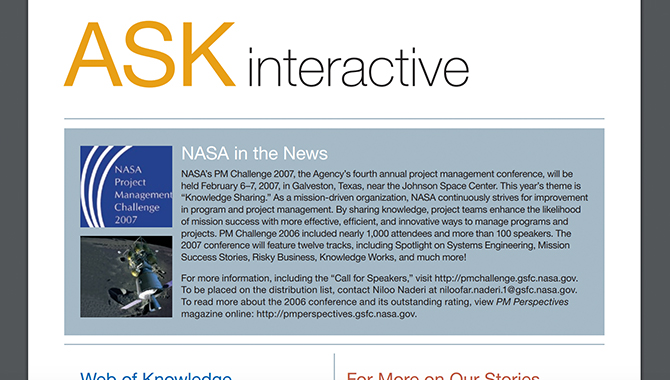Early knowledge management projects usually focused either on collecting and sharing documents or connecting people. As these examples suggest, neither of those strategies is always the right one — the choice should depend partly on what you are trying to communicate. And sometimes combining collection and connection enhances the value of both approaches.
British Petroleum: Access to Experts
British Petroleum’s Virtual Teamwork program, developed in the mid-nineties, used videoconferencing and shared computer applications to connect engineers responsible for developing and maintaining drilling projects. In some cases, off-site experts who could talk to and see their on-site colleagues (and be shown a diagram or a faulty part) helped fix problems that stumped less experienced engineers and were too complex or unusual for “textbook” solutions.
BP’s Peer Assist program, which encourages teams about to embark on a new project to invite people who have done similar work to meet and talk with them, is based on the same belief that bringing people together communicates richer and subtler understanding than documents and databases ever can. it’s a way to acquire know-how, not just information.
Recently, though, the company has begun to give attention to documenting some of what its engineers have learned from experience in an effort to lengthen corporate “memory” and capture some of what soon-to-retire employees know.
Partners HealthCare’s Decision-Support System
Partners HealthCare, a group of hospitals and other health care facilities in the Boston area, has been developing a system that captures and combines patient histories and the latest information on treatments, drug uses, and interactions. When physicians use the system to write prescriptions or order tests, it alerts them to potential problems and recommended treatments.
The creators of the system say that it is not meant to replace the diagnostic skills or judgments of experienced doctors. It does draw from the vast and growing stock of medical information to give doctors what they need at the moment. And it reminds them of some of the basics of “apple pie” medicine — the standard procedures that all doctors know but sometimes forget to apply.
Collect and Connect at McKinsey and MITRE
McKinsey, the highly respected consulting company, and MITRE Corporation have both invested in online systems that combine document collection with sophisticated expertise locators that help people connect with colleagues who have knowledge they need. Unlike so-called self-reporting expertise locators, which depend on people’s own descriptions of their skills, the McKinsey and MITRE locators use time spent on projects and documents submitted to determine who knows what about a given subject. This approach seems to give more useful and current results than self-reporting systems.
Users have described the benefits of having easy access to both documents and people. In some cases, a call to the expert helps explain and expand on information in a document. Sometimes studying a document before calling the author makes it possible to ask smarter, more productive questions when that person-to-person connection is made.







